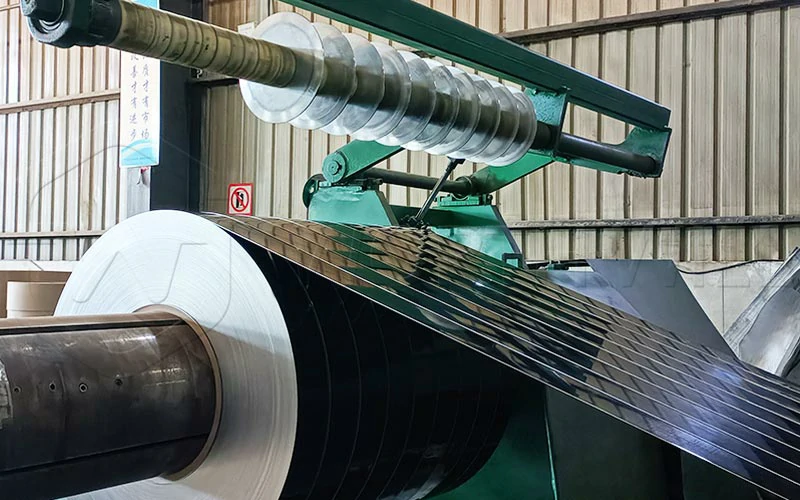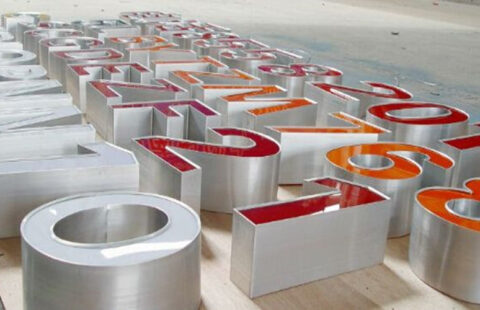
What Is Aluminum Strip?
Aluminum, a versatile and lightweight metal, has become an essential material in numerous industries. One of its most versatile forms is the aluminum strip. We’ll delve into what aluminum strips are, their properties, and the wide array of applications that make them a crucial component in modern manufacturing and everyday life.

Understanding Aluminum Strips
What Is Aluminum Strip? Aluminum strips are flat, thin pieces of aluminum that are typically rectangular in shape. They are produced through a process called rolling, where aluminum ingots are passed through rollers to achieve the desired thickness and dimensions. This process ensures that the strips have consistent thickness and a smooth surface finish.
Properties of Aluminum Strips
Aluminum strips boast a range of properties that contribute to their popularity:
Lightweight: Aluminum is known for its low density, making the strips lightweight and easy to handle. This property is particularly advantageous in applications where weight reduction is crucial, such as in the aerospace and automotive industries.
Corrosion Resistance: Aluminum naturally forms a thin oxide layer on its surface, providing excellent corrosion resistance. This makes aluminum strips ideal for outdoor applications, as they can withstand exposure to moisture and various weather conditions.
Conductivity: Aluminum is a good conductor of electricity and heat. This property makes aluminum strips suitable for use in electronics, wiring, and heat transfer applications.
Malleability: Aluminum strips can be easily bent, shaped, and formed without compromising their structural integrity. This malleability opens up a wide range of design possibilities in various industries.
Applications of Aluminum Strips
The versatility of aluminum strips lends itself to a plethora of applications across diverse industries:
Construction: Aluminum strips find use in window frames, door frames, roofing, and siding due to their durability and resistance to corrosion. Their lightweight nature also simplifies installation processes.
Electronics: Aluminum strips are integral to circuit boards, connecting components and facilitating efficient electrical conductivity. Their thermal conductivity also aids in heat dissipation, enhancing the performance and lifespan of electronic devices.
Automotive: Aluminum strips contribute to lightweighting in vehicles, improving fuel efficiency and reducing emissions. They’re used in trims, radiator grilles, and structural components in modern automobiles.
Packaging: Commonly employed in food and beverage packaging due to their ability to form moisture-resistant and airtight barriers. They help extend the shelf life of products and maintain their quality.
Heating and Cooling: Their excellent thermal conductivity makes aluminum strips vital in heat sinks, radiators, and air conditioning systems. They efficiently transfer heat, enhancing energy efficiency.
Creative Projects: DIY enthusiasts utilize aluminum strips in art and craft projects. Their ease of manipulation allows for the creation of intricate sculptures, ornaments, and decorative pieces.
Benefits of Aluminum Strips
Using aluminum strips offers several advantages: What Is Aluminum Strip?
Environmental Friendliness: Aluminum is highly recyclable, making it an eco-friendly choice. Recycling aluminum requires significantly less energy compared to producing it from raw materials.
Longevity: Aluminum’s corrosion resistance contributes to the longevity of products, reducing maintenance costs and replacement frequency.
Design Flexibility: The malleability of aluminum strips enables intricate designs and shapes, making them a preferred material for creative projects and innovative product designs.
Why To Choose Aluminum Strips?
Aluminum strips are more than just thin pieces of metal; they’re versatile components that play a vital role in various industries. Their lightweight nature, corrosion resistance, and conductivity make them indispensable in construction, electronics, automotive, and more. As technology and design continue to advance, aluminum strips will undoubtedly remain at the forefront of innovation, contributing to a more sustainable and efficient future.


